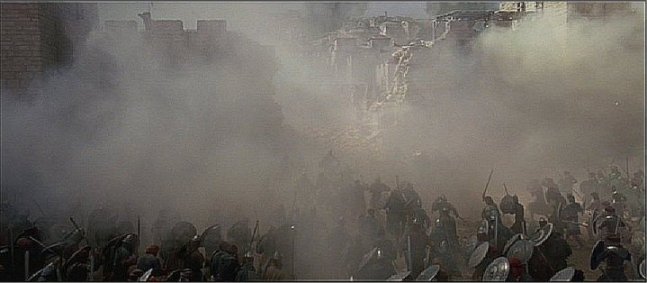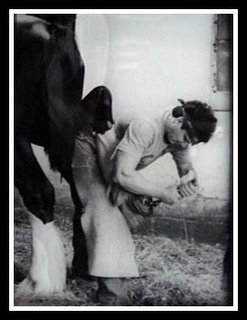Judge Cashman and the Restorative Justice Movement

The O'Rielly Factor, 27 January, 2006 brought to light the involvement of the Vermont judge, Cashman who originally gave a sentence of 60 days to a child rapist has been a participant in a new justice philosophy called Restorative Justice. Curious I began to research this concept. What I have discovered is another New Age philosophy that has been insinuating itself into the world's justice system quietly seeking to transform the way we view crime and criminals.
Angkana Boobsit, Ph.D in a presentation to the UN Congress outlined the restorative justice concept as it is practiced in Thailand. An excerpt shows the effort to take a simple concept for dealing with simple problems and then trying to extend that to all conflicts.
The restorative justice idea stems from the practice of putting the offender and the victim together to impress on the offender the consequences of his action, then come to terms with the victim on how to make them whole. While acknowledging that most people view this is an accepted practice for relatively minor crimes, the goal of the restorative justice movement is to extend its application to all crime.
The committee decided to target restorative justice in the pre-sentence investigation stage. It was limited only to cases of victimization, and only some offences. The main reason to limit was because most of the committee understood that restorative justice can apply only to compoundable cases and not to felony cases. Even though I do not agree completely, I think it is alright as a beginning. So we started restorative practice with pilot projects in 11 probation offices.
To accomplish this feat in the face of limited acceptance they want to alter the very way people perceive crime and punishment as if mellinnia of human experience is insufficient for the purpose.
Some understand that restorative justice is a new method for conflict resolution. Some understand restorative justice to be a mediation process for compromise, or for payment. In fact, restorative justice is the new paradigm, a new set of beliefs. To change paradigms means to change ways of thinking, to change beliefs, to change attitudes, to change viewpoints. So, it is very significant to make clear in the paradigm. I have always started the training course by working to instill in my trainees/students an understanding of the paradigm.
Similarly in Canada the effort to bring Restorative Justice into a universal application has met resistance.
Restorative Justice in Nova Scotia
The Nova Scotia Restorative Justice (NSRJ) program was implemented in 1999 after two years of pre-implementation planning. It aimed at implementing the restorative justice approach throughout the criminal justice system (CJS), having the premise that restorative justice, in some modality, could be applicable to all offenders and all offences throughout the province.
The NSRJ program has yet to expand, as projected, to respond to adult offending (there is an "alternative measures" or diversion program available for adults) but discussions are on-going on that issue. Also, a moratorium on dealing with cases of spousal/partner violence and sexual assaults remains in effect. The moratorium was put into effect in early 2000 in response to concerns raised by certain women's organizations and others over the proposed referral of such cases at post-conviction levels of the justice system. Considerable effort, via, for example, conferences and regional meetings, has been extended by NSRJ, in discussing issues and possibilities of restorative processing of such offences, in collaboration with representatives of the women's organizations and others.
Not deterred by reasonable objections to the application of this program to adult crimes, they wish to "educate" their opposition. The problem with this goal is they have no proof of results. At least they have no acceptable proof.
During the spring of 2003, I completed an internship at the Reinventing Justice
Project with a focus on the Restorative Probation. Despite its longevity, the program organizers had never conducted an evaluation, partly due to the budget restrictions. The other issue was how to accurately measure program impact. Most probation evaluations focus on recidivism to judge the success or failure of the programs; however, recidivism is not an applicable criteria for Restorative Probation. The main goal of restorative work is to heal relationships damaged by crime. It is enormously difficult to measure the outcomes of this type of goal through evaluation
Strehorn, Molly Ryan (2004). Restorative Probation in Franklin Country, Massachusetts. University of Massachusetts Center for Public Policy and Administration. Retrieved January 28, 2006,
With no way, or perhaps no willingness to test the results of the program other that to say people feel good afterwards is to admit that this effort is a failure before it starts. Society wants to be protected from evil people. The unwillingness to equate criminal activity with evil intent makes this goal impossible. That is why they seek to alter the perception of crime and criminals in the public's mind. Restorative Justice cannot protect the public so they wish to get the public to accept a new understanding of what crime is. This is how we end up with a judge in Vermont giving a child rapist 60 days in jail.
Judge Cashman has increaced his sectencing of the child rapist to 3-10 years with all the likelyhood that the man will be out in three years. Still an unacceptable punishment, but Cashman never said he thought punishmnet was apropriate here. If any good can be said to come of this case it is the revelation of the worldwide effort to make restorative justice the new paradigm. For warned is for armed.
For more info look at the Center for Restorive Justice web site
Basil's Picnic
Carnival of the Trackbacks XLVIII
CARNIVAL OF THE CLUELESS #31 at Right Wing Nuthouse
Other aticals on Cashman
Judge Cashman Changes Ruling at Conservative Thinking
Vermont’s Judge Cashman Painted Into A Corner at For Your Consideration
Under Pressure, Judge Cashman Increases Child Rapist Sentence at Tammy Bruce
Vermont Judge Cashman changes sentence at In The Bullpen
Best Of Homespun Bloggers February 5th








 BlogHop.com
BlogHop.com







3 Comments:
|>>...idea stems from the practice of putting the offender and the victim together to impress on the offender the consequences of his action...<<<
Ooooh, now heres a New Age concept I could cozy up to so long as things were kept on a level footing, I mean the victiim would have to be fully recovered and able bodied as it were and the offender sufficiently restrained to allow the victim a clean field of play. Why shouldnt a victiim or member of a victims family throw the switch or push the plunger as the case may be if they so choose?
Imagine, a lottery held amongst the survivors of those killed on Sept. 9th to decide whom would be allowed to ritually strangle Osama Bin Laden on the steps of the US Capitol, the West steps I should think, at sunset on a fine spring day. Full TV coverage mandated on penalty of being barred the airwaves. Talk about closure.
Some things our ancestors got right.
Actually, Restorative Probation comes from our ancestors. Ancient cultures used methods of shaming and circle traditions to deal with societal problems.
It is easy to use umbrella terms like "New Age" and "evil" in order to detract from core issues. Restorative Justice is a method that treats victims as human beings rather than evidence. What is so threatening about looking at the impact of crime on communities?
I find it interesting how restorative justice aims to change the way we view crime and punishment.
Post a Comment
<< Home